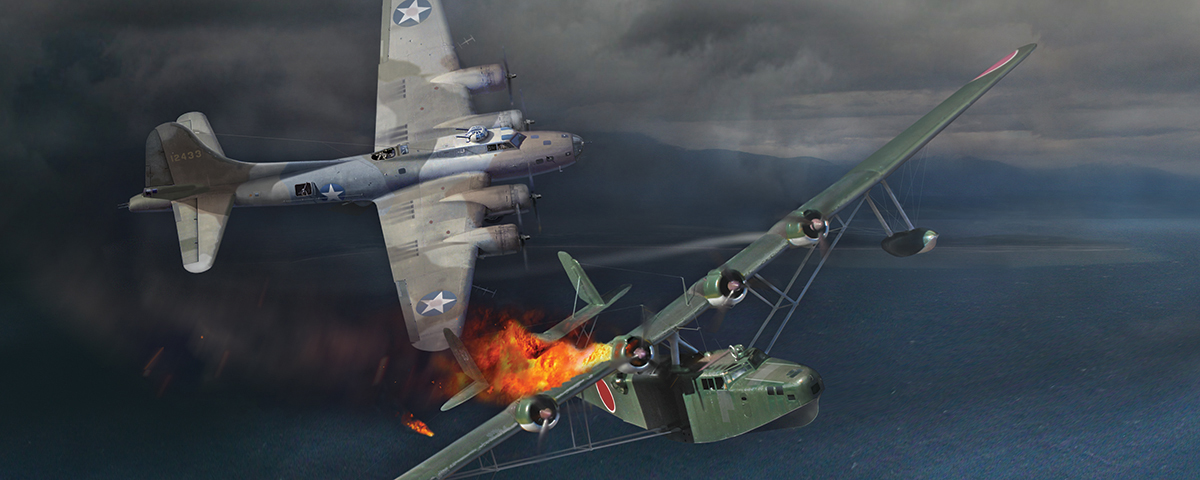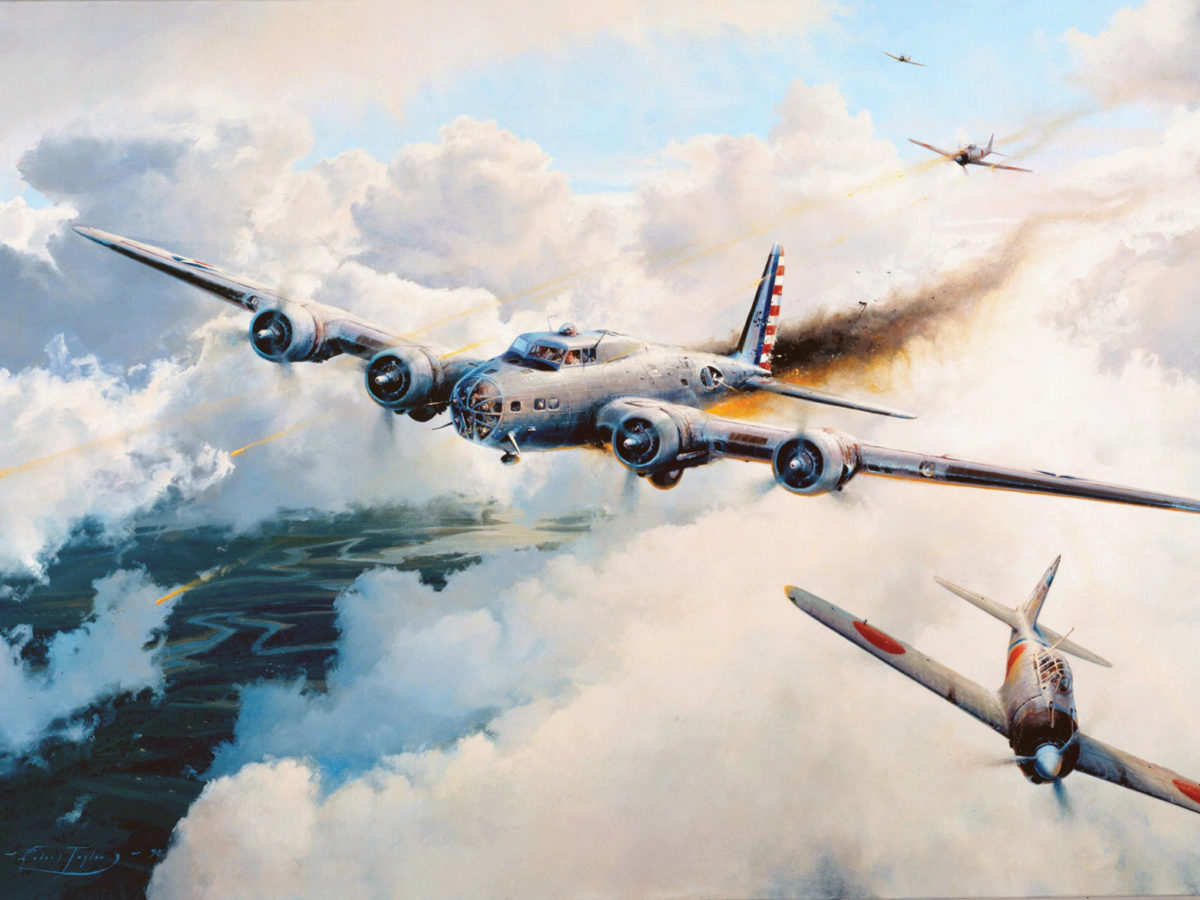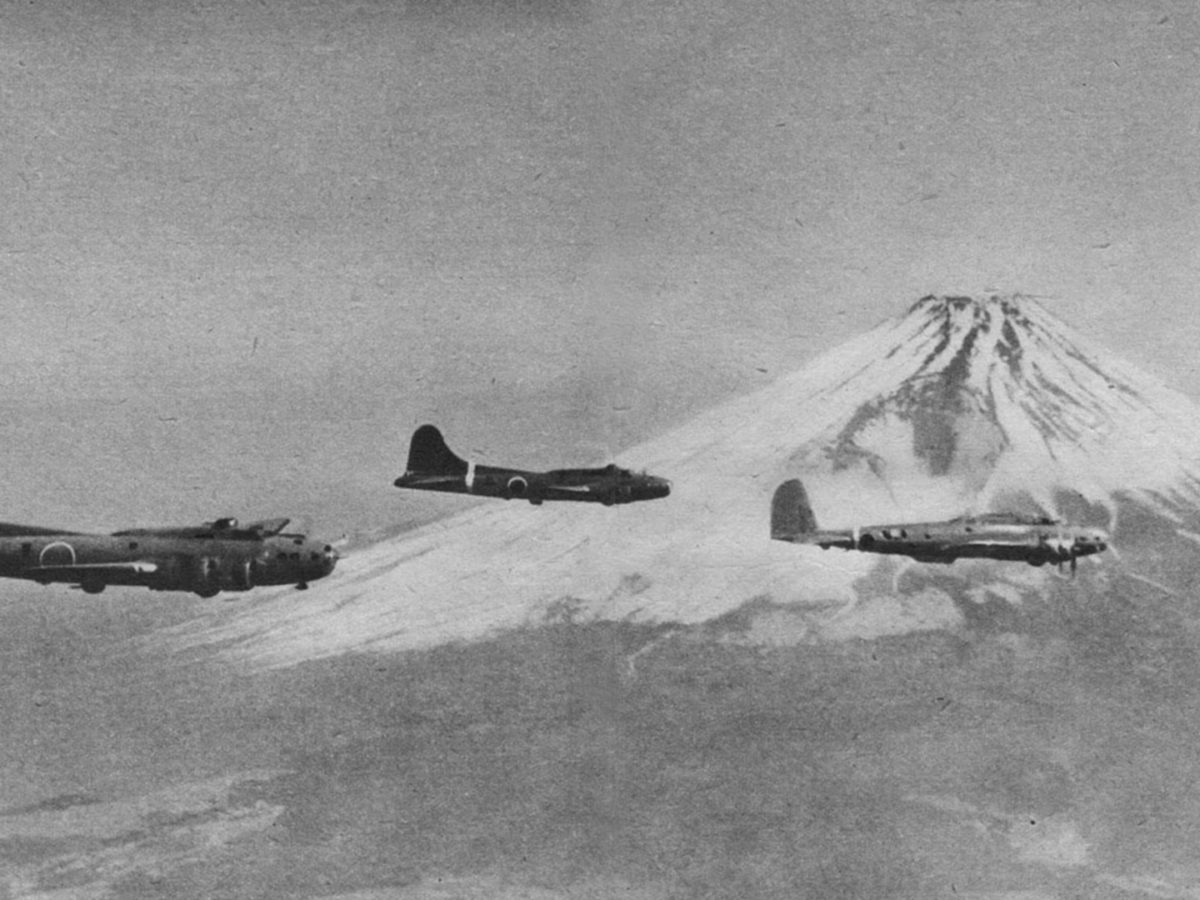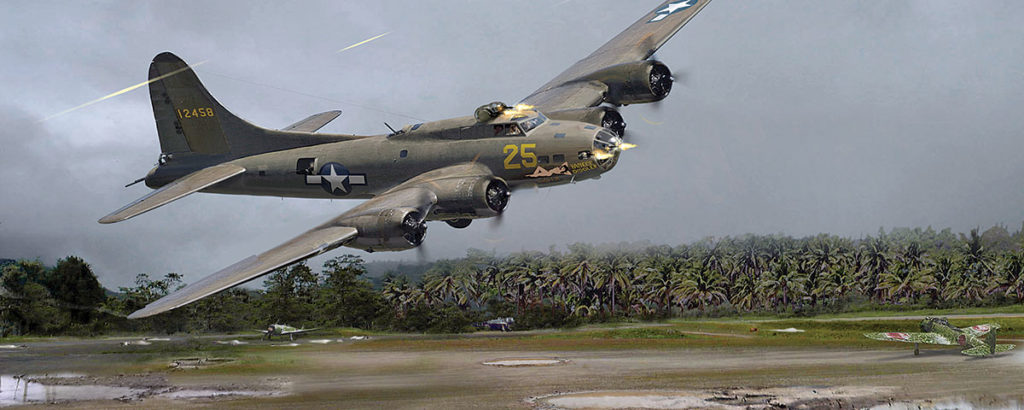On December 7, 1941, 12 unarmed B-17s on their way to reinforce the Philippines arrived over Oahu to find Pearl Harbor and Hickam Field under attack.
Six, led by Major Truman Landon, were from the 19th Bomb Group’s 38th Reconnaissance Squadron. Two of them, Landon’s 41-2413 and 41-2408 piloted by Lieutenant Karl Barthelmess, were brand-new B-17Es. The other four were obsolescent B-17Cs that would never see combat again. Following were six B-17Es from the 88th Reconnaissance Squadron, 7th Bomb Group, led by Captain Richard Carmichael in 41-2429.
Carmichael decided to fly northeast, “just off the ground,” and try Bellows Field. At Bellows he encountered more chaos, and at Kaneohe and Wheeler too. With little choice left he turned into the wind, lowered the landing gear and flaps and, in a near stall, dragged the Flying Fortress onto the runway of the short auxiliary strip at Haleiwa. Lieutenant Harold Chaffin had landed there five minutes earlier in 41-2430. Lieutenants Robert Thacker in 41-2432, Harry Brandon in 41-2433 and David Rawls in 41-2434 braved Japanese and friendly fire to land at Hickam. Lieutenant Robert Ramsey, Brandon’s copilot, recalled “getting shooted at, muchly, by both countries.” Lieutenant Frank Bostrom in 41-2416 landed on a golf course at Kahuku. One B-17C was destroyed on landing and another damaged beyond repair, but all eight B-17Es and two B-17Cs were safely down by the time the Navy issued orders to “cease firing on B-17s attempting to land at Hickam.”
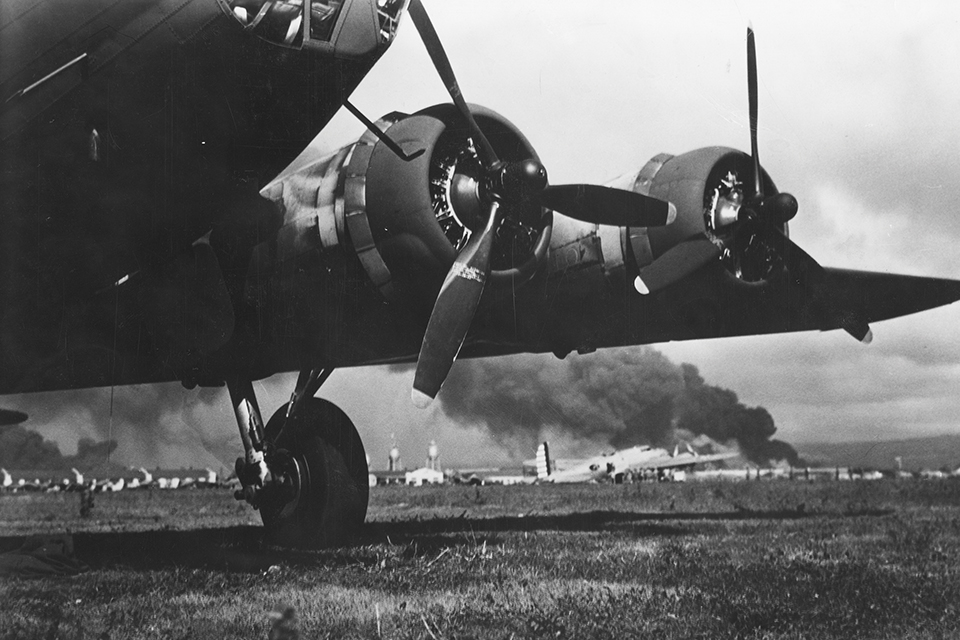
With every reason to expect that the Japanese would be back, probably with an invasion force, the movement to the Philippines was postponed indefinitely. All 10 bombers were commandeered by the Hawaiian Air Force and put to work patrolling the surrounding waters. As a further precaution, Brig. Gen. Jacob Rudolph issued an order on December 10 to overpaint the B-17s to “blend” with “the area in which they were dispersed.” He later noted that “lack of proper colors prevents getting color desired,” but provided no further explanation. The work was hastily carried out, presumably by or under the supervision of the Hawaiian Air Depot Refinishing Section. There was a basic pattern and all the overpainted planes were similar, but no two were identical. The colors, chosen purely to protect the bombers on the ground, appear to have been shades of rust, sand, blue-gray, the earlier fast-fading olive drab and remnants of factory-applied dark olive drab. Data blocks were masked off and radio call numbers were added to the tails.
Brigadier General Clarence Tinker endorsed the camouflage program when he arrived to take command of the Hawaiian Air Force on December 18, but just three days later two relatively junior officers, Navy Lt. Cmdr. Frank O’Beirne of Patrol Wing Two and the Hawaiian Air Force’s Major Ernest Moore, agreed to a compromise to aid with aircraft identification. Red-centered roundels would be displayed on both port and starboard upper and lower wings as well as the fuselage sides, with 13 alternate red and white stripes painted on the rudders. It’s not known to what degree the bolder, brighter markings contributed to the conclusion of the program, but by then the unique camouflage adorned at least 20 B-17Es, including the eight December 7 arrivals.
As the threat of attack receded, the B-17s routinely patrolled the ocean around Hawaii. On the afternoon of January 3, 1942, 23rd Bomb Squadron commander Major LaVerne Saunders, flying 429, bombed a pair of submerged submarines without result and lost contact after a 40-minute pursuit. The following day Lieutenant Ralph Wanderer in 433 reported an enemy sub 600 miles out, but it escaped beneath the waves.
In the early morning of January 16, six B-17Es from the 5th and 11th Bomb groups took off from Hickam. Their mission was to provide long-range reconnaissance for the Enterprise task force while pioneering a route through the South Pacific. Three were from the 23rd Squadron: Captain George Blakey in 429, Lieutenant Francis Seeburger in 432 and Wanderer in 433. During the two-week operation they experienced all the complications that would hinder Allied units operating from advanced bases for months to come. After 433 developed a problem with the no. 3 engine that defied all efforts to repair it, the airplane and crew had to be left at Fiji when the others returned to Hawaii on January 30.
The Southern Bomber Command was born when the Navy “desired” a dozen B-17s to provide support for the carrier Lexington and Task Force 11 in the New Caledonia area. Six of the chosen crews had arrived in Hawaii on December 7, and five of the command pilots—Carmichael, Bostrom, Chaffin, Rawls and Thacker—reclaimed the aircraft they had flown from the mainland. The exception was Brandon, whose 433 was still sitting in Fiji. He took 408.
They left Hawaii on February 10 and were at Nandi, Fiji, by Valentine’s Day. On February 17, the six bombers proceeded to New Caledonia with the intention of flying on to Townsville, Australia, the next day. With foul weather predicted in that area, Carmichael elected to lead the Flying Fortresses to Brisbane, also on the Australian coast but well to the south.
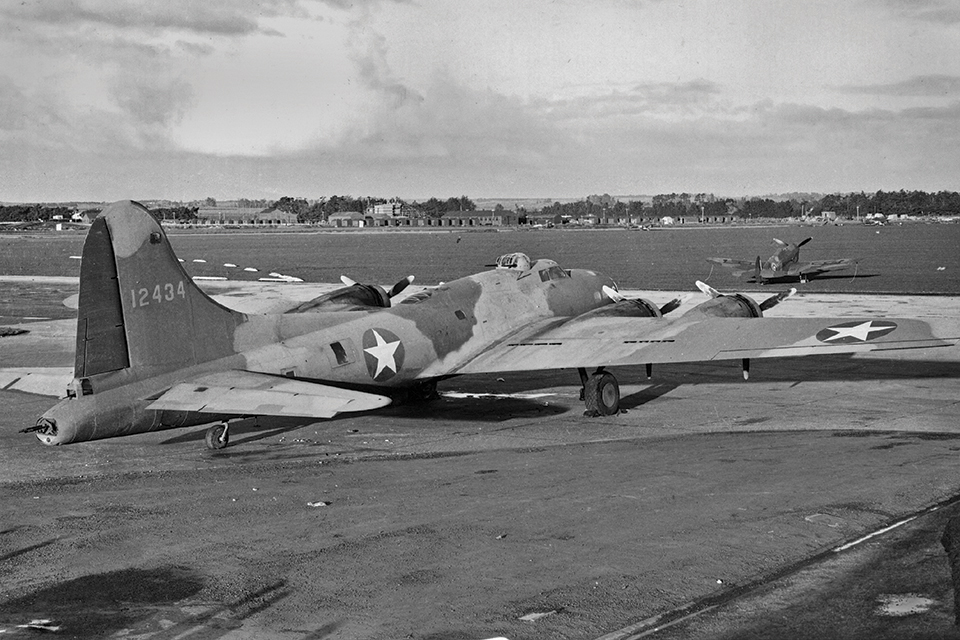
His six B-17s landed safely on the grass airstrip at Archerfield, where misfortune, in the guise of a civilian DC-3, arrived that evening. The airliner lost traction on the wet landing strip and slammed into Chaffin’s bomber, damaging the starboard wing, fuselage and tail. Nobody was injured, but 430 was left at Archerfield when the others flew on to Amberley the next day, then to Townsville on February 20.
A planned mission to Rabaul, the big Japanese base on New Britain, was postponed, so the B-17s were flown 400 miles inland to Cloncurry as a precaution. They returned to Townsville on February 22, where things went awry again. Rawls taxied into 416 in the darkness, and its whirling no. 4 propeller chewed through 434’s port wingtip. Carmichael in 429 and Brandon in 408 were airborne around midnight and reached cloud-covered Rabaul in the early morning, but defending Zeros were ready and gave Brandon a warm reception. His no. 3 engine caught fire, and two of his crewmen were wounded. Brandon made it back to Port Moresby, the advanced base on New Guinea, running out of fuel before he cleared the runway. Carmichael flew the two wounded men to Townsville for medical attention, and Brandon brought 408 and the rest of his crew back the next day.
Rawls’ 434 was repaired overnight with parts from 416. Chaffin’s 430, with a “new” outer wing section salvaged from a less-fortunate B-17, passed a test hop on March 3. Bostrom’s 416 remained at Townsville, where all hope of repairing it was abandoned two months later when parts of the bomber were shipped south to Melbourne. As the squadron historian drily noted: “If Melbourne can’t get parts what are we to do? The ships are unloaded there, not here.”
More Fortress Tales from the Pacific
On March 14, Carmichael’s command was officially designated the 40th Reconnaissance Squadron, 19th Bomb Group, and returned to Army control. A few days later Captain William Lewis in 429 and Chaffin in 408 played a part in the rescue of General Douglas MacArthur, his family and his staff from the Philippines.
The bold rudder stripes were already gone when the squadron historian noted on April 4 that the markings on the B-17s had been modified: “Now the symbol is a white star without the red dot….The Japs have changed our ideas about red.” On April 22, the 40th was redesignated the 435th Bombardment Squadron and Major William Lewis assumed command.
Throughout the May 4-8 Battle of the Coral Sea, the 435th’s bombing was very disappointing, but its relentless reconnaissance proved invaluable. The crews were dog-tired, and tragedy was only narrowly avoided on May 11 when Lieutenant James Gibb in 432 collided with another B-17 during a fruitless search for a crippled aircraft carrier. Both landed safely, Gibb’s bomber with a mangled tail.
The 23rd Squadron’s 433 had been in Fiji awaiting a new engine since January. It suffered further indignities in February when Carmichael’s crewmen helped themselves to anything they needed, including five enlisted men from Wanderer’s crew. Finally flown back to Hawaii on March 21, it resumed flying patrols and training missions until April 30, when Captain Richard Stepp landed short at Bellows Field, tearing off the tail gunner’s section. Named Miss Fit (although it’s not known whether the name was actually painted on the plane), it was considered a “jinx B-17” by some.
Lieutenant James Van Haur flew 413 to Midway with the 431st Squadron on May 31, but returned from a search mission the next day with engine problems. After all repair attempts failed, Van Haur flew back to Hawaii on three engines and took no further part in the Battle of Midway.
When the 11th Bomb Group moved south to the New Hebrides in July 1942 to support the Guadalcanal campaign, neither 413 nor Miss Fit went with them.
By the end of July 1942, now–Lt. Col. Carmichael had assumed command of the reorganized 19th Bomb Group, and the 28th, 30th and 93rd squadrons were established at Mareeba, Australia, about three hours by air from Port Moresby. The 435th remained at Townsville, though the squadron’s oldest aircraft were transferred to the other units.
Over the previous months the old B-17s and crews had suffered many mishaps but no fatalities. That changed on August 7, when the 93rd Squadron’s Captain Harl Pease Jr. was shot down by Zeros over Rabaul in 429. Pease and gunner Sergeant Chester Czechowski parachuted from the doomed B-17, but they were quickly captured and imprisoned, only to be executed two months later. Pease was posthumously awarded the Medal of Honor.
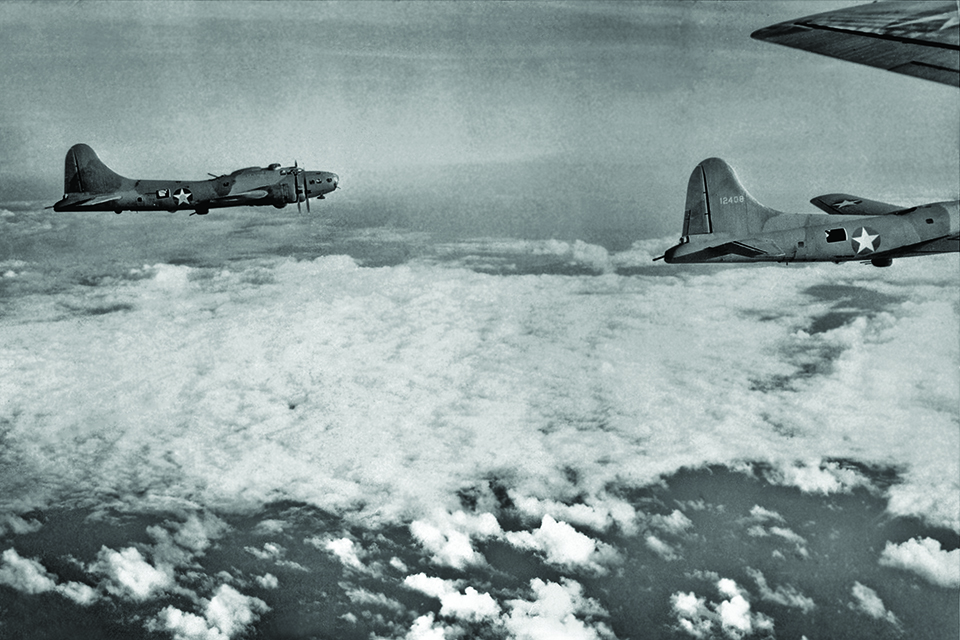
On August 16, Major Dean Hoevet, 30th Squadron commander, was testing a new flare delivery method off the Australian coast in 434 when it caught fire and crashed. “The plane was near the beach, its tail end sticking out of the water,” Chaplain William Taggart recalled. “It was impossible to move the Flying Fortress so we could look for those who might be imprisoned under the wreck.” Twelve men were aboard the Fortress, but only six bodies were recovered.
Rumors had been circulating that the 19th would be relieved, and new planes and crews had been arriving in Australia. In September 408 was assigned to the 21st Troop Carrier Squadron, and by October 430 and 432 were relegated to flying leave crews back and forth to Sydney.
As a result of the Allies’ “Europe first” policy and other factors, U.S. military planners decided that no new B-17s would be sent to the Pacific after October 1942. The plan was to ultimately replace them with B-24 Liberators, but in the meantime there was a gap to fill. So after the 19th went home, 408, 430 and 432 were overhauled and modified, returning to action with the 43rd Bomb Group. Along the way 430 was named Naughty but Nice and 432 became The Last Straw.
Naughty but Nice had a narrow escape during the Battle of the Bismarck Sea in March 1943, when Lieutenant James Easter was mortally wounded by a fighter attack. Fortunately his inexperienced copilot, Lieutenant Russell Emerick, was able to get the bomber safely back to the advanced base at Dobodura. The old B-17’s luck finally ran out in the early morning hours of June 26 over Rabaul when a Nakajima J1N1-Ckai “Irving,” an improvised night fighter, shot it down. Only the navigator, Lieutenant José Holguin, survived both the shootdown and his subsequent interrogation by the notorious Kempei Tai.
One way or another, the 11th Group had by this time lost more than a dozen Flying Fortresses since moving to the New Hebrides. As a result, on October 18, Miss Fit joined the group’s 26th Squadron as a replacement.
Five days later a routine anti-submarine patrol erupted into a ferocious duel when 433 encountered a four-engine Kawanishi H6K4 “Mavis” flying boat attacking a PBY-5A Catalina. War correspondent Ira Wolfert was aboard, and he reported that the pilots, Lieutenants Edwin Loberg and Bernays Thurston, put the old bomber through a series of maneuvers that had it “shaking and rippling all over like a skirt in a gale.” During the running battle, navigator Lieutenant Robert Spitzer and bombardier Lieutenant Robert Mitchell were wounded. Finally, after 44 minutes of ear-shattering mayhem, the Mavis was down, floating in a pool of blazing fuel. Takeshi Shimoyamada and his crew perished.
Loberg got back to Espiritu Santo late that afternoon. Spitzer was only slightly wounded, but Mitchell seriously enough to be sent to New Zealand on USS Solace. Miss Fit was back in the air the next day with Lieutenant William Kyes and his crew.
On October 25, Loberg was flying 433 on a mission against Japanese warships when a 5-inch shell tore through an elevator without exploding. Loberg took Miss Fit to Efate the next day, had a new horizontal stabilizer and elevator installed, flew back to Espiritu Santo on October 27 and completed a search mission in the plane the following morning!
On December 10, the 31st Bomb Squadron borrowed 433 for a lone photo mission to Kahili on Bougainville. Zeros intercepted Miss Fit, and copilot Captain Carlyle Coleman was killed by a single bullet in the eye. The B-17’s gunners shot down one of the attacking fighters.
Sometime during the weeks after the Midway battle, 413 had been badly damaged in an accident. The Hawaiian Air Depot’s Colonel Ansel Dekle reported it was “destined for the junk heap” until “the boys from HAD” assumed the repair task. Although it had sacrificed its vertical tail section to a new B-17F passing through Hawaii on the way to Australia in August, the job was finally completed, and the reborn B-17E joined the 42nd Bomb Squadron as a replacement on December 26.
Two days later 413 was one of a dozen 5th and 11th group B-17s sent to Port Moresby for coordinated strikes with the Fifth Air Force, returning to Guadalcanal on January 5, 1943. Captain Glenn Sorenson flew the bomber on missions to drop supplies to American troops fighting entrenched Japanese in the hills and ridges in the Matanikau River area of Guadalcanal on January 14. When the 11th Bomb Group returned to Hawaii, the well-traveled veterans 413 and 433 were passed on to the 5th Bomb Group’s 31st Squadron.
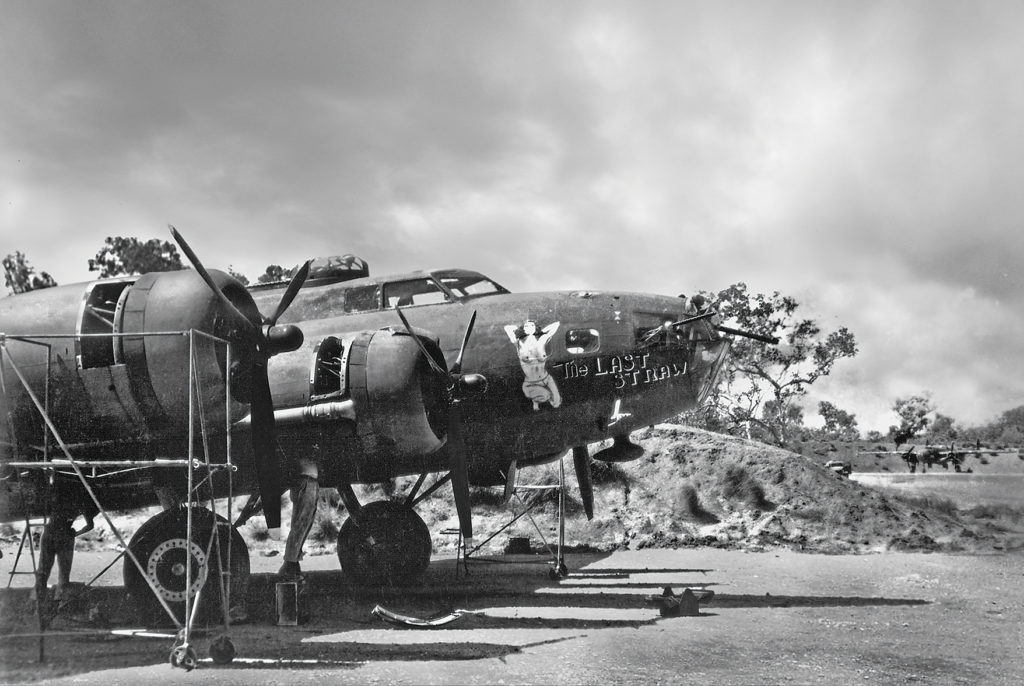
In the evening of March 20, a simple but audacious mission took shape when nine B-17s, including Captain William Kyes in Miss Fit, joined nine B-24s to attack Kahili airfield. Their mission was to attract the attention of the searchlights, anti-aircraft gunners and night fighters while TBF Avengers slipped in at 1,500 feet to mine nearby Shortland Harbor. The operation was precisely timed so each flight would be over Kahili for nine minutes, and it was extremely successful. The following night a “practically identical” mission was flown. Major Francis Brady, piloting 413, remarked, “The fact that we got 18 planes out of 18 off the ground with no spare is something that I dare say has not happened with new equipment let alone old piles of junk like we are using.”
A week later Brady flew the squadron’s other veteran, 433, to Espiritu Santo to have faulty bomb racks repaired. He wrote in his diary: “It’s no wonder it doesn’t work well. It’s had over 1400 combat hours on it and has been shot up 12 times besides losing its tail on landing twice….On the way home we lost the #3 engine about an hour out from Guadalcanal. Really a bag of bolts.”
The old B-17s continued their reconnaissance and harassing missions during the following months. On June 15, all were transferred to the 23rd Squadron when the 31st converted to Liberators. At the end of August, 433 had been dropped from 23rd Squadron records, but 413 soldiered on. Its last known mission was a weather recon from Espiritu Santo on September 12. The bomber returned to Hawaii in 1944 and was condemned there in 1945.
By November 1943, the 43rd Bomb Group’s transition to the B-24 was complete, and 408 and The Last Straw were among 12 veteran B-17s modified for use as armed transports. With ball turrets removed and hinged steel bins fitted in the bomb bays, they played an important part in the Admiralties and Hollandia operations. On May 16, 1944, the 433rd Troop Carrier Group sent 432 to Townsville Air Depot for repair; The Last Straw never returned, disappearing from the records after being declared obsolete in January 1945. The 317th Troop Carrier Group shows no record of 408 after the middle of 1944, and it was condemned in Australia later that year.
And then there was one: Miss Fit, the supposedly jinxed bomber, returned to the U.S. in 1944 and served as a trainer, first in Florida and finally at the flexible gunnery school at Yuma, Ariz. The last survivor of the Pearl Harbor B-17Es, 433 was scrapped at Albuquerque, N.M., in 1945.
Aviation historian Steve Birdsall writes from Sydney, Australia. His first book was The B-17 Flying Fortress, published in 1965, and his most recent is Pride of Seattle, the story of the first 300 B-17Fs. For insight into early operations from Australia and New Guinea, he recommends My Fighting Congregation, by William C. Taggart. For more on aircraft camouflage and markings, he suggests the three-volume Air Force Colors series by Dana Bell.

